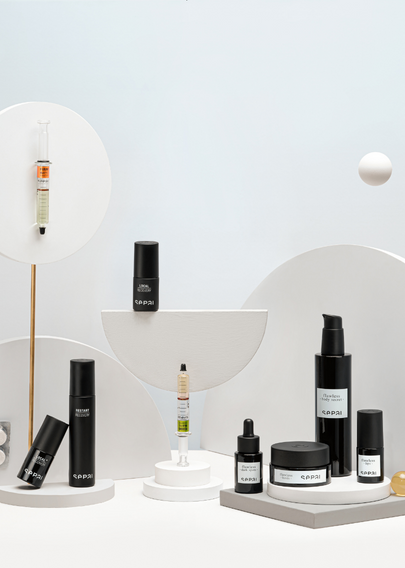As described by WWD, the metaverse is ‘the internet of life instead of the internet of things’, an entirely new 3D internet that will be experienced through Virtual Reality (VR). Currently, the only fully functioning space that could really be considered a metaverse can be found in gaming – but this is just a nascent version of what the technology will evolve into. Today’s undeveloped metaverse reminds us of the e-commerce of a decade ago and it is our prediction that luxury brands that do not get ahead of the curve will be left behind – in exactly in the same way that brands that did not adapt to digital were. Currently leading the development of the Metaverse is Mark Zuckerberg’s Meta. Their pitch was that the company previously known as Facebook would manage everything – the payments gateway, content creation, the e-commerce system – allowing brands to work on a single, unified platform. But centralisation is not a certainty, while the internet evolved organically but ended up centralised, the metaverse has the potential to usher in a new era of decentralisation.
The opportunities offered to luxury brands have the potential to be boundless. Commercially, the Metaverse will be an entirely new avenue for selling digital goods – from clothes and accessories for users to dress their avatar in, to homeware for them to decorate their digital space with. Creatively, brands will be able to build spaces and products that are unbound by traditional physical limitations. And the Metaverse will also offer exciting new marketing opportunities to reach a non-traditional but affluent consumer base. For luxury brands looking to experiment in the metaverse, there are enormous structural changes in the offing. Just the act of creating the complex the 3D assets and persistent virtual world necessary to participate will require new knowledge, teams, and ways of working. But there are more considerations than just adapting to the technology. It is essential that organisations also consider the potential sustainability impacts of becoming a part of the metaverse.
In this article we will unpack a few of those considerations to help your organisation prepare, adapt, and get ahead of sustainability implications and opportunities:
Data Centres & Storage
The move to the metaverse will require the creation of persistent virtual worlds by both brands and tech giants. The cloud-streamed data necessary for these words to function will be enormous, leading directly to – in Intel’s estimates – a thousand-fold increase in computing power. According to VentureBeat, ‘Over the past decade, efficiency gains have decoupled data center workloads from power consumption. From 2010 to 2020, internet traffic increased 16.9x and data centers 9.4x, yet power consumption grew only 1.1x. Excluding crypto currency mining, data centers represent about 1% of global electricity demand.’ However, it is believed that the metaverse risks reversing these improvements in efficiency and decarbonisation. Firstly, creating a fully realised digital world in virtual reality requires low latency, meaning that there is a minimal delay in the processing of computer data over a network connection. This will force those creating these worlds to establish new data centres closer to users – with all the associated environmental costs. In addition, companies may be forced to create their own data centres to comply with data privacy and localisation legislation. These two factors could force organisations to create data centres in less energy efficient areas, resulting in a greater environmental footprint. Any luxury brand forced to create additional data storage to keep up with the demands of the metaverse will find doing this sustainably extremely challenging. Recycling electronics is a complex task, with less than a quarter of all U.S. electronic waste being recycled and the rest going to landfills. This means that if an organisation plans to upgrade its current data storage, it will first have to find a way to safely and sustainably dispose of its current technology.
COMMERCE
Perhaps the most environmentally worrying factor around the metaverse is the factor attracting brands in the first place: commerce. The acts of creating, selling, owning and investing are currently being built around Non-fungible token (NFT) technology, with digital goods being ‘minted’ through blockchain-based processes and being paid for with cryptocurrency. However, according to Ey ‘the average Ethereum transaction consumes 60% more energy than 100,000 credit card transactions, while an average Bitcoin transaction consumes 14 times more energy.’ This means that the same commercial processes currently taking place on Web 2.0 are simply more damaging on Web 3.0, making it extraordinarily difficult for luxury brands with sustainable aspirations to currently justify the move to the metaverse.
LEGISLATION
According to McKinsey, navigating legislation in the metaverse will be extremely challenging for luxury brands. Firstly, ‘as the metaverse ecosystem is ubiquitous, it will be challenging to decide what law applies and in which jurisdiction proceedings need to be held’. Secondly, ‘transactions in metaverse will very probably increase conflicts of laws in jurisdictions… as the interaction between participants is more immersive’. And thirdly, labour law will become increasingly complex, as employees ‘may want to live in greener or more affordable countries but still benefit from the same standard of protection they are used to.’ It is imperative that any brand looking to experiment with the metaverse involves their legal team as early in the process as possible – ensuring that they are fully prepared and protected before committing.
VIRTUAL CONSUMPTION
According to Penn State it takes 9,982 gallons of water to make one pair of jeans. A move to virtual over physical consumption, where consumers choose to buy jeans for their avatar rather than themselves, promises to create huge savings in both carbon and water consumption. If this is replicated across other verticals like homeware, with consumers choosing to decorate their virtual apartment over their physical one, it could completely reshape the luxury economy. Even now, the EY Future Index has discovered ‘21% of consumers intend to buy fewer physical items in the future because they expect to do more things digitally’ – and that number will only rise as the metaverse develops. For luxury brands looking to reduce their carbon footprint, this is the main attraction of the metaverse. Convincing customers to spend on virtual rather than physical goods will be challenging but this has the potential to maintain profits whilst reducing an organisation’s use of natural resources, impact on biodiversity, and emissions.
THREE TAKE-OUTS FOR LUXURY
1. Find the tight partners: Whilst offering digital goods may seem sustainable, the reality is far more complex. Issues surrounding the minting of NFTs, and increased energy and data usage will require luxury brands finding technology partners that share their sustainability values
2. Start building your taskforce: Fully understanding the creative, financial, legal, and sustainable implications of operating within the metaverse will require input from a multi-disciplinary taskforce. Positive Luxury recommends assembling that team before committing to the metaverse and tasking them with assessing exactly what this will mean for a business and how to operate there without damaging your brand or compromising your values
3. Link the digital and the physical: The move to the metaverse is challenging because the expertise for many luxury organisations lies in their ability to create physical goods. However, retooling as a digital business may not be necessary. Look to Tiffany & Co’s limited-edition run of Cryptopunk-inspired pendants which circumnavigated deep involvement in web 3.0 technology and instead focused on what Tiffany was already good at: creating luxury jewellery
Further Reading:
WWD: What NFTs, the Metaverse and Luxury Have in Common
BCG: How the Metaverse Will Remake Your Strategy
Jing Daily: Why Luxury Brands Need to Take Web3 and the Metaverse More Seriously
FashionUnited: PwC Analysis: How the Metaverse is changing retail and consumer good industry
Positive Luxury Members’ Zone community exclusive content:
McKinsey: So You Think You Want To…establish a presence in a metaverse
< Back



